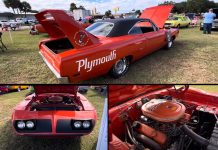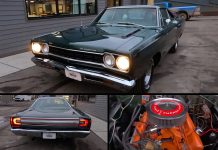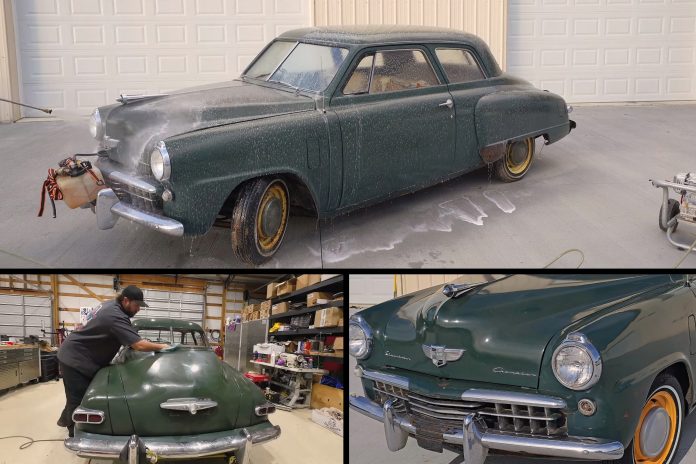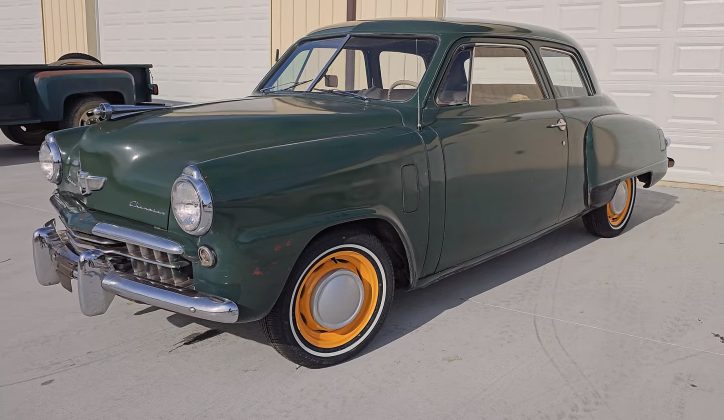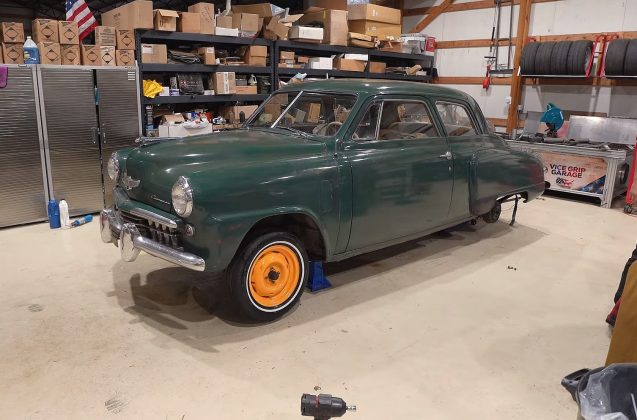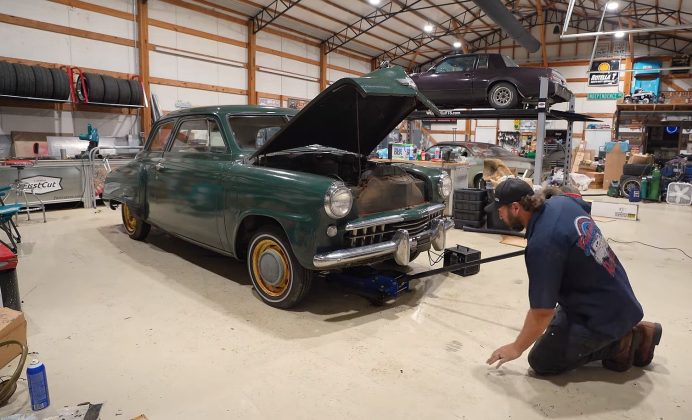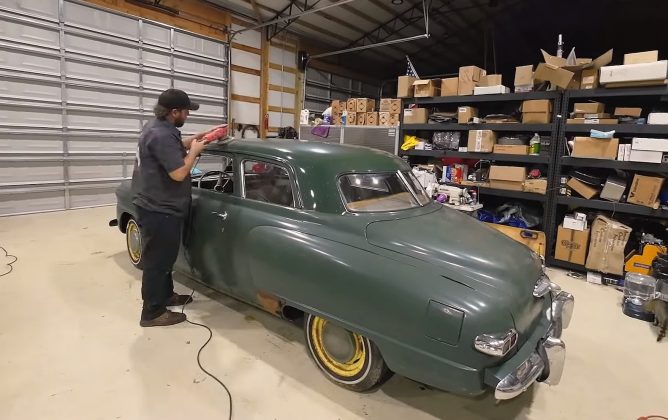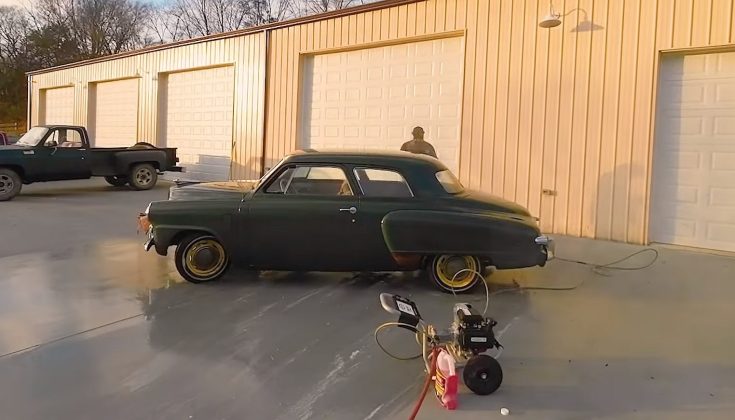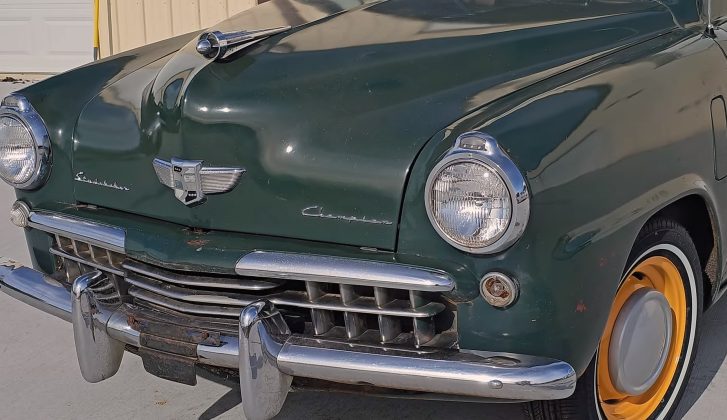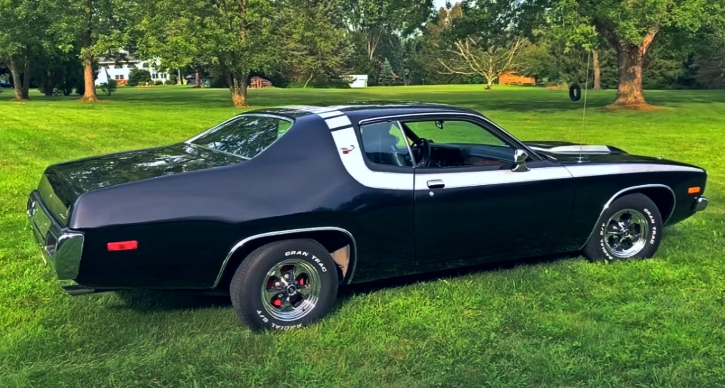In October 2023, Vice Grip Garage, featured on YouTube, uncovered a hidden gem — a 1948 Studebaker Champion that had been languishing in the outdoors for two years. Remarkably, this classic had been in a garage slumber since 1976, boasting a retirement of 47 years when it was pulled from the field.

Despite exposure to the elements, the Studebaker emerged intact, and the 170-cubic-inch straight-six engine roared back to life. With the two-door now running and mobile, the host, Derek, embarked on a mission to revive the exterior, giving the car its first wash in nearly half a century.
A pressure washer tackled layers of dust and grime, revealing a green paint job reminiscent of post-World War II hues. Though not the original factory color, having been repainted in the early 1970s, the decades spent in the garage preserved the paint’s freshness.

The host took it a step further, repainting the wheels and fitting new tires, transforming the Studebaker into a stunning classic ready for display at any car show.
While visually impressive, the Studebaker still requires upgrades to become roadworthy, including a new tank and brakes. Nevertheless, compared to its barn-found counterparts, this third-generation Champion stands out as a promising project.
Sadly, many third-generation Studebaker Champions have met a less fortunate fate, succumbing to rust and neglect. The bankruptcy of Studebaker in 1967 compounded the issue, leaving owners without company support for maintenance.
Studebaker introduced the Champion in 1939, marking the replacement for the Dictator. Spanning five generations until 1958, this midsize model evolved from a full-size car in 1952. The 1948 Champion, part of the third generation, arrived as the first new American design after World War II, with the 1950-1951 version gaining iconic status for its distinctive “bullet nose” styling.
# FAQs
## Q1: How rare is the 1948 Studebaker Champion?
Studebaker produced nearly 88,000 units of the 1948 Champion, making it relatively common. However, the survival rate of late 1940s vehicles is low, and it’s estimated that fewer than 10,000 examples of all body styles still exist today.
## Q2: What challenges does the 1948 Studebaker Champion face in becoming roadworthy?
While the exterior has been beautifully restored, the Studebaker still requires essential upgrades. Specifically, it needs a new tank and brakes to meet roadworthy standards.
## Q3: Why are third-generation Studebaker Champions considered rare?
Many of these classics met unfortunate fates, being abandoned in junkyards or locked away in barns over the years. The bankruptcy of Studebaker in 1967 further contributed to their rarity, as owners faced challenges in performing maintenance without company support.
## Q4: How did the bankruptcy of Studebaker impact the maintenance of its vehicles?
After Studebaker went bankrupt in 1967, owners were left without support from the company’s service department. This lack of assistance made it challenging for many to perform necessary maintenance on their vehicles, contributing to the decline of these classics.
## Q5: What distinguishes the 1948 Studebaker Champion from other models?
As part of the third generation introduced in 1947, the 1948 Studebaker Champion holds historical significance as the first new American design after World War II. Its midsize model status, evolving from a full-size car in 1952, sets it apart. The 1950-1951 version, with its “bullet nose” styling, is particularly iconic.
## Q6: How did the restoration efforts contribute to the Studebaker’s appeal?
Restoration efforts went beyond mere functionality, with the host not only reviving the engine but also meticulously cleaning and repainting the car. The result is a visually stunning classic, making it a standout contender for car enthusiasts and show displays.
## Q7: Are there plans for further restoration and upgrades?
While the Studebaker Champion has undergone significant restoration, there are plans for additional upgrades to enhance its roadworthiness. The ongoing project aims to transform this classic into a fully functional and reliable vehicle.
## Q8: How did the YouTube channel “Vice Grip Garage” contribute to the restoration’s documentation?
The restoration process was documented on the YouTube channel “Vice Grip Garage.” This documentation not only showcases the journey of rescuing the Studebaker from its outdoor slumber but also provides insights into the meticulous steps taken to bring this classic back to life.



